






Train the Trainer

Sponsor Guide
Meet the AMCAI Team!
Advance Michigan Center for Apprenticeship Innovation




Amanda Bauerschmidt
Workforce Project Manager
Jess Keenan
Associate Project Manager
Laurie Huber
Workforce Project Manager
Dr. Jan Karazim
Workforce Program Manager

To create a comprehensive and cohesive workforce development system in Southeast Michigan that provides employers with the talent they need for success.





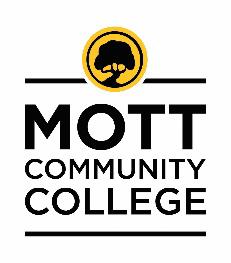




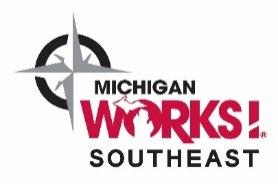
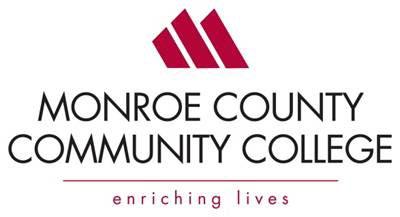



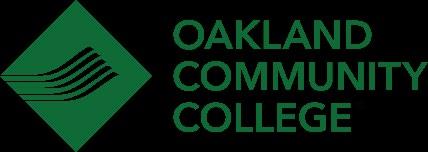

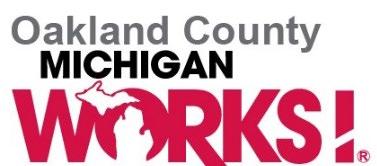




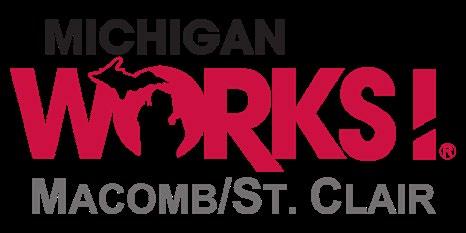





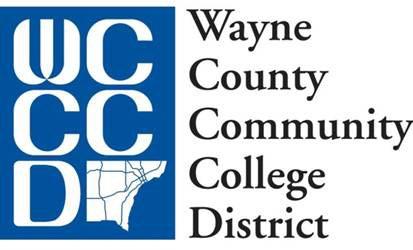


This workforce product was funded by a grant awarded by the U.S. Department of Labor’s Employment and Training Administration. The product was created by the recipient and does not necessarily reflect the official position of the U.S. Department of Labor.
The Department of Labor makes no guarantees, warranties, or assurances of any kind, express or implied, with respect to such information, including any information on linked sites and including, but not limited to, accuracy of the information or its completeness, timeliness, usefulness, adequacy, continued availability, or ownership. This product is copyrighted by the institution that created it.

Employers
Apprentices
US DOL
RTI Providers
Intermediaries
Workforce Development Agencies

• An apprenticeship intermediary is an organization with the capacity, expertise, and network to help businesses successfully create, launch, manage, and expand apprenticeship programs.
• This organization is called the program sponsor or standards-holder of their apprenticeship program.
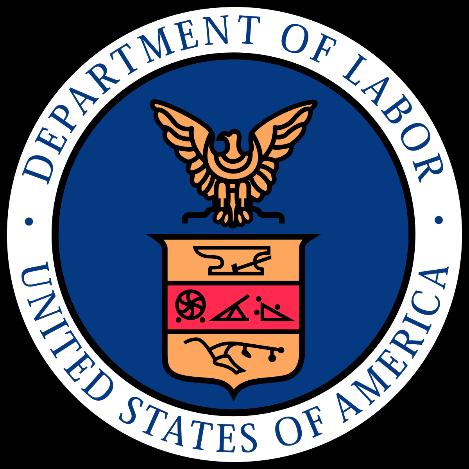




The intermediary will act as a concierge/consultant service to:
Share RA fundamentals & best practices with employers
Funding opportunities, industry standards, workforce development
Build an apprenticeship program for the employer “where they’re at”
Work Process, Related Technical Instruction, Wage Scale
Certify it with the Department of Labor, Office of Apprenticeship (DOL/OA)
Liaise and update as necessary
Manage and track the apprenticeship program for the employer
DOL Compliance: Hours, Skills, Wages, EEO/AAP

• Act as liaison between stakeholders
• Facilitate the program development and registration process
• Sponsor apprenticeship programs on behalf of employers
• Manage records, compliance, tracking
• “Outsourcing” an HR function for employers
Goal: streamline the process for employers to develop, launch, and manage an apprenticeship program

• Employers – employers often sponsor their own apprenticeship programs.
• Labor Unions – many labor unions sponsor apprenticeship programs and provide apprenticeship RTI.
• Third Party Organizations – sometimes, a third-party organization may serve as the sponsor of an apprenticeship program on behalf of employers. This essentially “outsources” the management and oversight of the program to the sponsor.

The Registered Apprenticeship Standards are the key document.
• SOP
• How the program will run
• Who is responsible for program management
To Register:
• The DOL has created a new process for NEW companies (or sponsors) adding FIRST occupation
Steps:
• Create account through Login.gov
• Identify First Company and Occupation
• Submit form through the US DOL Office of Apprenticeship. apprenticeship.gov/employers/registered-apprenticeship-program/register/standards-builder

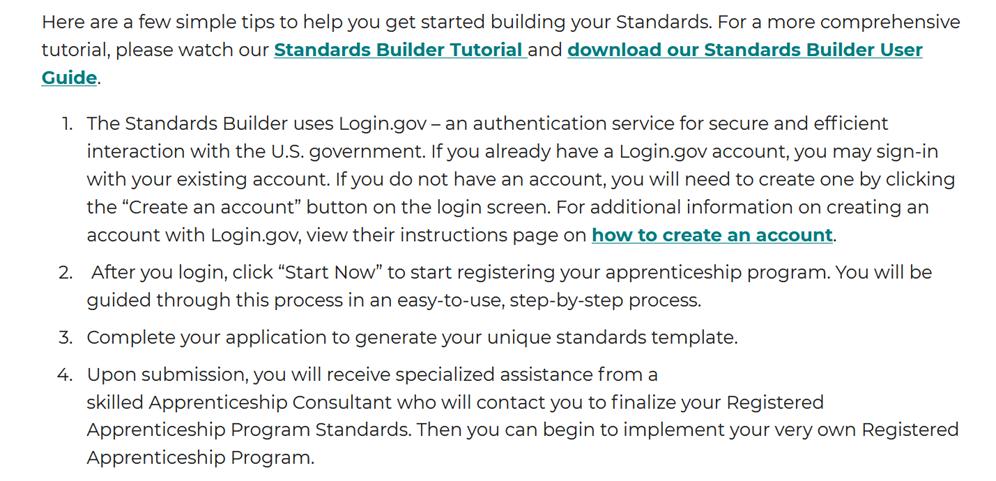
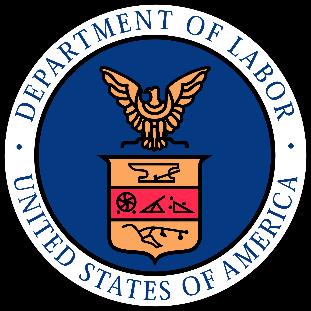

https://vimeo.com/742727965/a9a5745a77 Once you create your account via Login.gov you will be able to enter the Online Standards Builder.


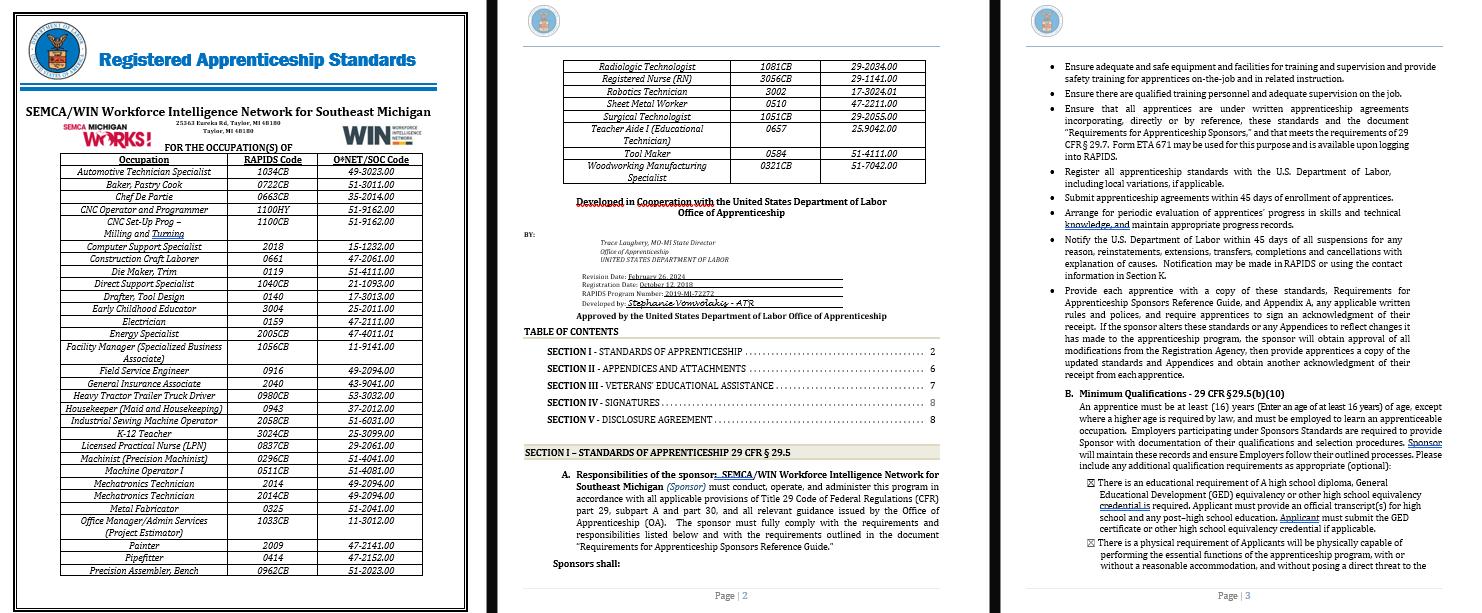
Click here for the most up to date version: https://miapprenticeship.org/employers/win_apprenticeship_intermediary_program.php

CFR 29.29
ecfr.gov/current/title-29/subtitle-A/part-29
This part of the Code of Federal Regulations (CFR) governs the National Apprenticeship System. It sets labor standards to protect apprentices, promote apprenticeship opportunities, and register apprenticeship programs with the U.S. Department of Labor. The regulations also cover the cancellation and deregistration of apprenticeship programs and agreements.
CFR 29.30
ecfr.gov/current/title-29/subtitle-A/part-30
This part of the Code of Federal Regulations (CFR) covers equal employment opportunity standards (EEO) for apprenticeship programs. The purpose is to promote EEO for apprentices and applicants for apprenticeship in registered apprenticeship programs by prohibiting discrimination.

A) Responsibilities of the Sponsor:
• Ensure adequate and safe equipment and facilities for training and supervision and provide safety training for apprentices on-the-job and in related instruction.
• Site Visit Recommended
• Ensure there are qualified training personnel and adequate supervision on the job.
• Verified Work Experience
• Ensure that all apprentices are underwritten apprenticeship agreements that incorporate the standards' entirety, including the requirements of 29 CFR § 29.5 and 29 CFR § 29.7.

A) Responsibilities of the Sponsor (Continued):
• Submit apprenticeship agreements within 45 days of enrollment of apprentices.
• Receive signed 671
• Arrange for periodic evaluation of apprentices’ progress in skills and technical knowledge and maintain appropriate progress records.
• Tracking Software or Spreadsheet (e.g. WorkHands)
• Notify the DOL within 45 days of all suspensions for any reason, reinstatements, extensions, transfers, completions and cancellations with explanation of causes.
• Notification may be made in RAPIDS or to registration agency

A) Responsibilities of the Sponsor (Continued):
• Provide each apprentice with a copy of these standards, Requirements for Apprenticeship Sponsors Reference Guide, and Appendix A, any applicable written rules and policies, and require apprentices to sign an acknowledgment of their receipt.
• Intermediary Apprentice Agreement
• If the sponsor alters these standards or any Appendices to reflect changes it has made to the apprenticeship program:
• The sponsor will obtain approval of all modifications from the Registration Agency, then provide apprentices a copy of the updated standards and Appendices and obtain another acknowledgment of their receipt from each apprentice.

B) Minimum Qualifications
• Apprentice(s):
• Must be at least 16 years of age
• Must be employed in an apprenticeable occupation
• Sponsors:
• Must provide documentation of employer qualifications and selection procedures
• Must maintain these records and ensure employers follow outlined processes

Additional Qualification Requirements:
• Educational requirements of high school diploma or GED
• Physically capable of performing essential functions of programs
• However, employers may require a physical agility, fitness test.
• Sponsor does not require aptitude test
• However, employers may per their selection procedures.
• Sponsor does not require a valid drivers license
• However, employers may per their selection procedures.
• Sponsor does not require a drug test
• However, employers may per their selection procedures.

Continued
C) Apprenticeship Approach and Term
• Customized in Appendix A/D
D) Work Process Schedule and Related Instruction Online
• Customized in Appendix A/D
E) Credit for Previous Experience
• Obtained during registration
F) Probationary Period
• May not exceed 25% of length of program
G) Ratio of Apprentices to Journeyworkers
• Customized in Appendix A/D
H) Apprentice Wage Schedule
• Customized in Appendix A/D

I) Equal Employment Opportunity and Affirmative Action
• Equal Opportunity Pledge - 29 CFR §§ 29.5(b)(21) and 30.3(c)(1)
• Affirmative Action Program
J) Complaint Procedures
• Complaints Regarding Discrimination
• Other General Complaints
K) Registration Agency General Contact Information
• Must have US DOL OA Area Training Representative (ATR) Identified with contact information
L) Reciprocity of Apprenticeship Programs

• A talent development strategy that trains individuals to be experts in their field. It combines:
on-the-job learning
classroom learning
mentorship
• Well-defined, documented, and approved by the US Department of Labor (DOL).

• US DOL Registered Apprenticeships are governed by the Code of Federal Regulations (CFR), Title 29, Parts 29 and 30. It is recommended that individuals in the workforce development field who support apprenticeship development and management read both of these parts from the CFR.
• Related Resources: (1) CFR 29 29, (2) CFR 29 30

• Develop and grow a highly-skilled workforce.
• Reduce turnover and foster loyalty among employees.
• Create customized, flexible training solutions to meet their unique needs.
• Retain institutional knowledge as experts near retirement age.
• Be considered for funding opportunities tied to registered apprenticeship.

• Earn while they learn with an increasing wage during the apprenticeship.
• Develop new skills in high-demand fields.
• Learn from a mentor who is an expert in the apprenticeship occupation.
• Begin a long-term career with little or no college debt.
• Earn a nationally-recognized apprenticeship certificate from the U.S. Department of Labor.
• Ensure their personal and professional growth based on the expressed commitment of the employer in their training and success.

• Overall labor market by fostering a culture where employers see the value in investing in their employees
• Individuals, in turn, feel invested in and are incentivized to remain and grow with their employer
• Knowledge is continually handed down from expert journeypersons to individuals entering their field, providing a consistently skilled labor force in high-demand and highly technical fields.

The Overview
• Define Apprenticeable Occupation
–Visit apprenticeship.gov/occupations
–Retrieve Rapids & O*NET Code, Type, Term Length
• Define Work Process, RTI, and Wage Scale
• Define Delivery Method
• Define Model
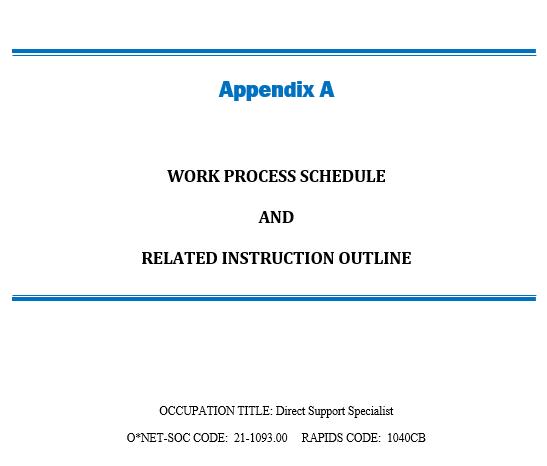

• The program’s on-the-job learning requirements are documented in a Work Process Schedule (WPS) that defines what an apprentice will learn on the job.
• The program’s classroom learning requirements are documented in its Related Technical Instruction (RTI) outline which may occur at a college, union, private institution, internally at the employer, or a combination.
• At least one wage increase.
• Employer sets their own minimum wages; apprentices can always be paid more but not less.

Time-Based (TB)
• Progress measured by accumulation of OJT hours.
• Vary in length from 1 to 6 years.
Competency-Based (CB)
• Progress is measured by mastery of defined competencies in WPS.
• Length should match a comparable time-based program and cannot be less than 1 year (~2000 hours).
Hybrid (HY)
• Progress is measured by attainment of competencies within a range of hours.
• Vary in length from 1 to 6 years.

Must include at least 2,000 hours of OJT, but many programs last for four or more years.
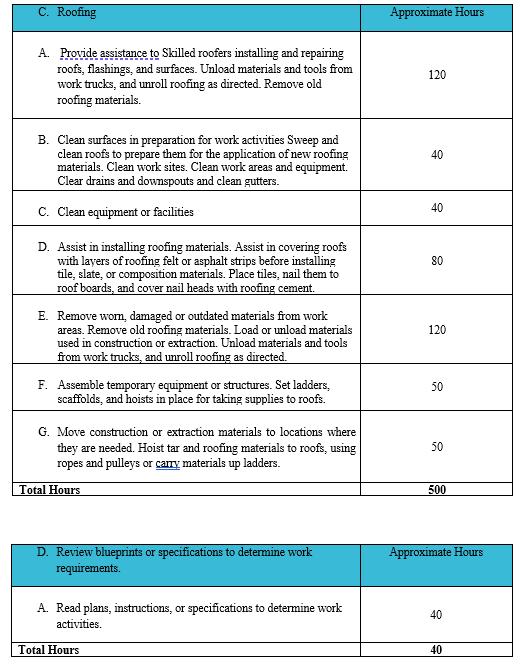




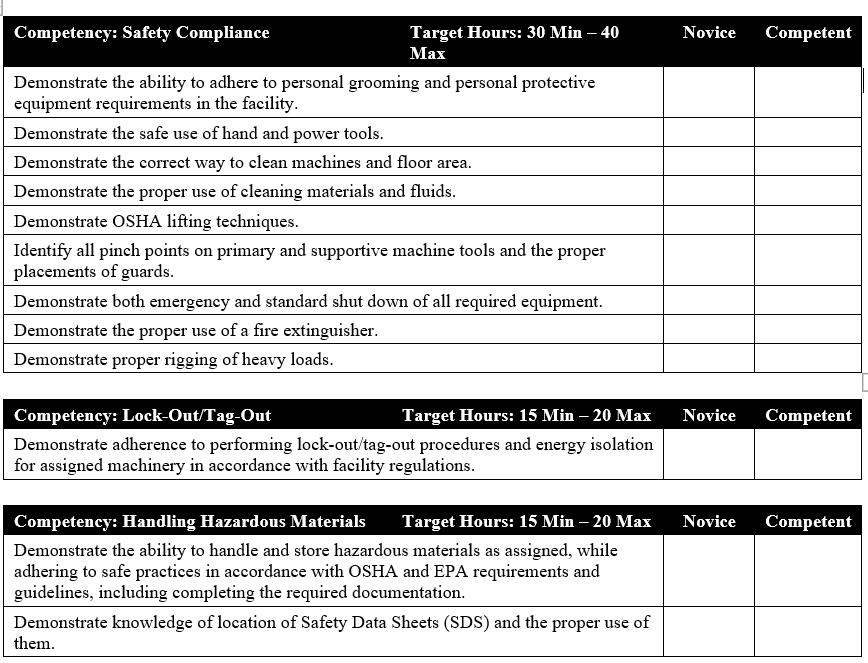
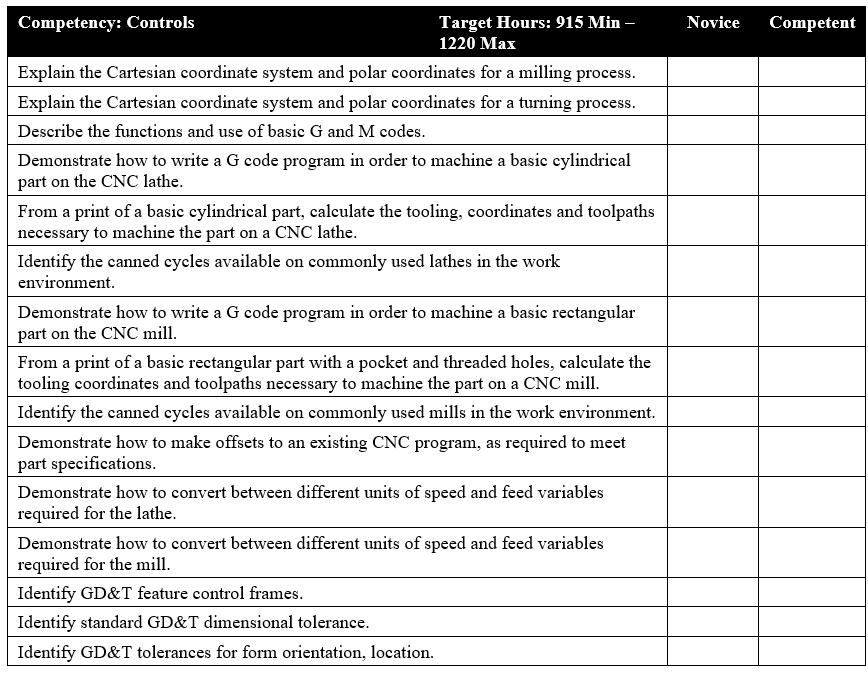

Section 2, 3, 5
Section 2: Term of Apprenticeship
• This section lists the total number of OJT and RTI hours which varies by occupation.
Section 3: Ratio of Apprentices to Journeyworkers
• This section is always 1:1 ratio unless explicit permission is granted by State Director.
• List total number of ‘journeyworkers’ at company.
Section 5: Probationary Period
• Probationary period can be no more than 25% of total term length.
• Formula
Total OJL Hours x .25 = Probationary Period Term Length

• Must be above minimum wage
• At least one increase
• Acts as wage floor (can always be exceeded but never below)
• Rules of thumb:
–Entry level wage is approximately 50% of exit wage –Exit Wage is approximately 75% of journey-workers wage
• Average wages in Michigan
ROI Calculator
Michigan Bureau of Labor Statistics

Time-Based:
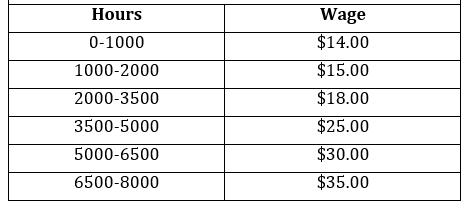
Competency-Based:

Hybrid program may use either approach
If an employer asks for feedback on their wage scale, check
O*Net for average wage information. This can help the company determine if their wages are competitive.



• Connect with the preferred RTI providers, and request sample RTI (curriculum) for the trade.
–Multiple providers can be included in one RTI.
–For every 2,000 hours of OJT hours there should be 144 contact hours of defined RTI.
–One college credit hour typically translates to 15 contact hours.
• Work with the appropriate Apprenticeship Coordinator to customize a curriculum that suits the employer needs.

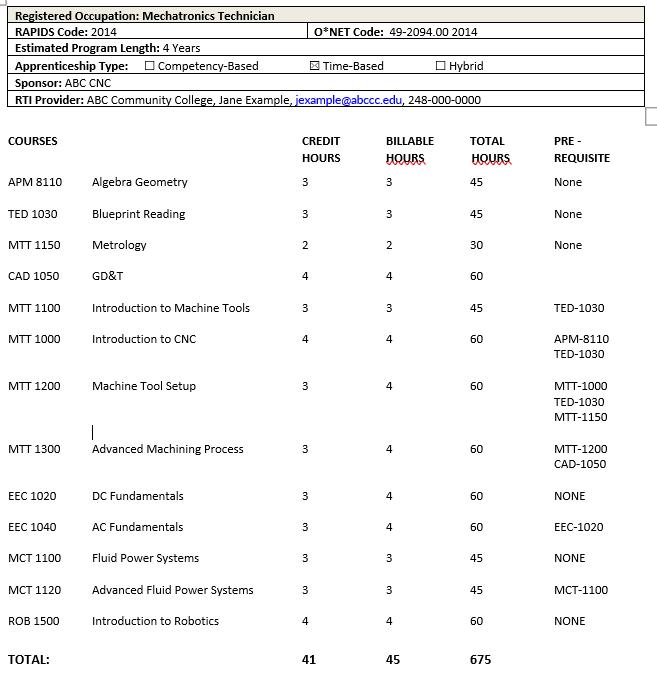

Traditional
• Work Process and RTI occur concurrently throughout the life of the apprenticeship program.
Front Loaded
• All (or most) RTI occurs up front, then the apprentice completes all of their work process during on-the-job learning.
Segmented
• Apprentices alternate between working full-time and attending classes full-time.

Employer Acceptance Agreement

*After Appendix A has been built.
When submitting a NEW OCCUPATION, you will:
• Submit Appendix D with wages, journeyworker ratio, hiring requirements.
• Share Intermediary Standards.
• Ask employer to review, and if acceptable, fill out & sign Appendix D.

Employer Acceptance Agreement

When submitting a NEW EMPLOYER under EXISTING OCCUPATION:
• Share Existing Occupation Appendix A (with employer).
• Share Intermediary Standards.
• Ask employer to review & sign if acceptable…
• Submit Appendix D with wages, hiring requirements, journeyworker ratio, OJT changes (as long as within 25%), RTI (if adding new provider or curriculum).

*After Existing Appendix A has been reviewed and employer has submitted requested revisions.
When submitting a NEW OCCUPATION
1. Submit Appendix A [with probationary period, OJT and RTI].
2. Submit Appendix D Employer Acceptance Agreement [including wages, hiring requirements, journeyworker ratio].
When submitting a NEW EMPLOYER under EXISTING OCCUPATION
1. Submit Appendix D Employer Acceptance Agreement [including wages, hiring requirements, journeyworker ratio, OJT changes (as long as within 25%), RTI (if adding new provider or changing approved RTI curriculum)].

• This is Optional to have for an Intermediary but highly recommended
• This is Mandatory for employer to sign prior to joining your intermediary
• Hold Harmless
• Signed by Sponsor Intermediary & Employer

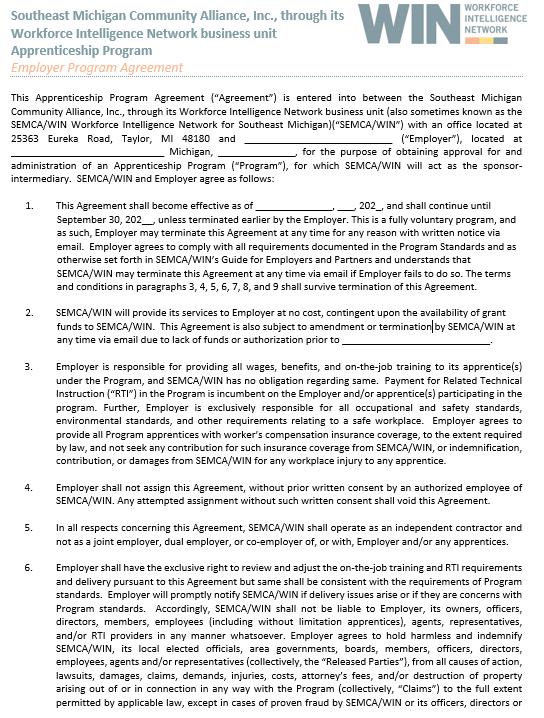


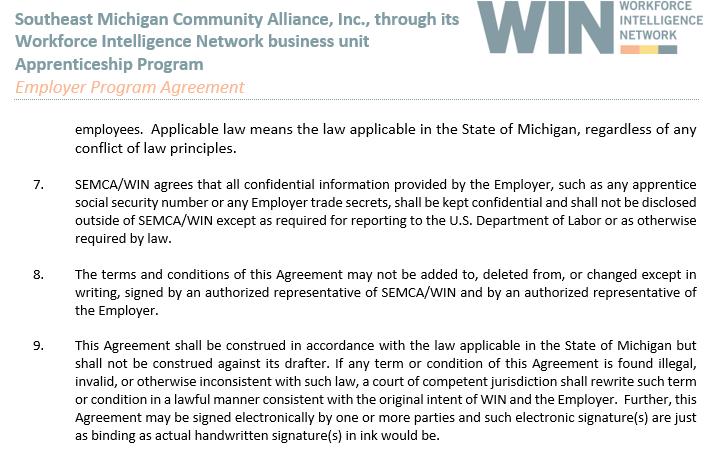




Process:
1. Submit to DOL Apprenticeship Training Representative (ATR).
2. Intermediary will receive initial approval via DOL ATR.
3. ATR will send Intermediary DOL Cover Page to sign with O*Net and RAPIDS code of submitted occupation(s).
4. Intermediary will sign DOL Cover Page and return to ATR.
5. ATR sends Appendix A and signed Cover Page to DOL/OA State Director.
6. State Director will review and give final approval.
7. ATR will return final approved documents to Intermediary.
*Please note your program is not officially approved and registered until the State Director signs off and the ATR sends approved documents back.

• Maintain communication with employer to ensure program is continued, engaged, and no changes are necessary
– Best practice: Quarterly Check-Ins
• Maintain records in accordance with DOL regulations
– Employer EEO policy should be provided by Employer upon request
– Hiring procedures and HR records should be provided by Employer upon request
– All documentation/records should be kept for a minimum of 7 years after completion/termination/closure
• Prepare for, participate in, and complete US DOL Audits on behalf of employers

• Participant personal and demographic information for apprentice registration
• DOL Apprentice Agreement (Form 671)
+ (Optional) Intermediary Apprentice Agreement
• Work Process (OJT) Progress
Credit for Previous Experience signed by supervisor, Live-time progress signed off by supervisor(s)
• Related Technical Instruction (RTI) Progress
Credit for Previous RTI, Semester/Annual transcripts
• Wage Verification
Initial verification, updates, and final verification with dates and apprentice info visible
• DOB verification
• Annual Disability Disclosure
• EEO Records
Acknowledgment of EEO training, resources, etc.
• Other Relevant Information
Disciplinary actions, resignation, revisions, pauses, completions

• Create a customized form to collect apprentice information
Include all personal and demographic information requested for apprentice registration with the US DOL.
Include any additional questions required for funding opportunities. Our example: Self-Registration Form
• Retain in apprentice folder
Electronic record keeping in a secure location is preferred
• Internal use only
This is protected information used for apprenticeship and should not be provided externally without written consent of apprentice

DOL Registration and Apprentice Agreement (Form 671)
Complete form includes:
• Apprentice information
• Employer information
• Occupation information
• Wage Schedule
• RTI Institution & Total # of Contact Hours
• Work Process Length
• Apprentice’s Previous Credit of RTI and OJT
Please Note: Form can only be generated after apprentice is registered in RAPIDS with DOL approval.
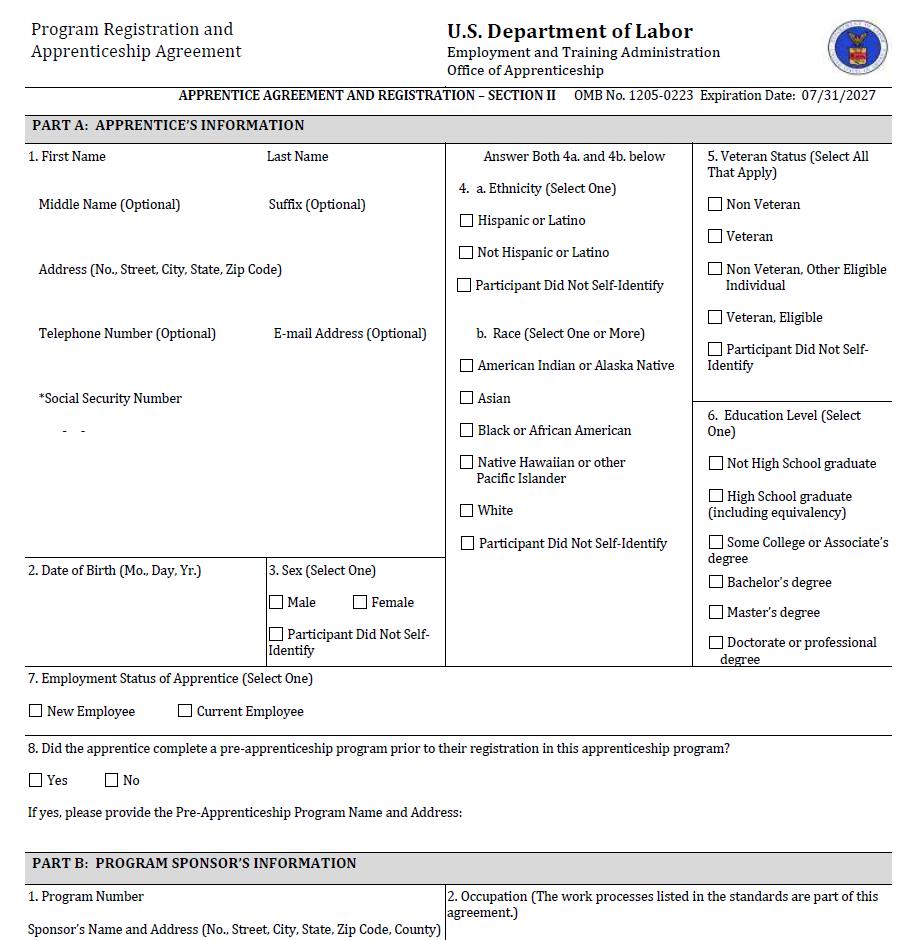

DOL Registration and Apprentice Agreement (Form 671)
Signatures required after apprentice registration:
• Sponsor Representative
• Employer Representative
• Apprentice
Please Note:
Form can only be generated after apprentice is registered in RAPIDS with DOL approval.
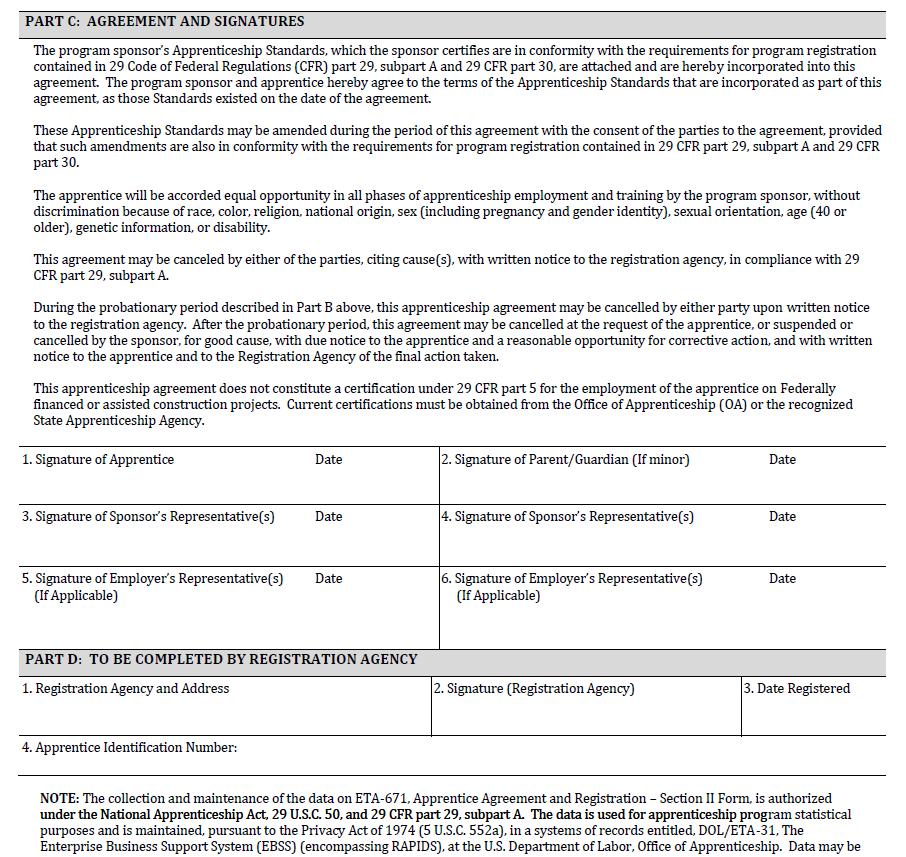

(Optional)
• Reaffirms 671 agreement
• Education authorization to obtain transcripts on their behalf
• Outlines Rights to Accommodation(s)
• Independent contractor agreement (sponsor)
• Hold Harmless
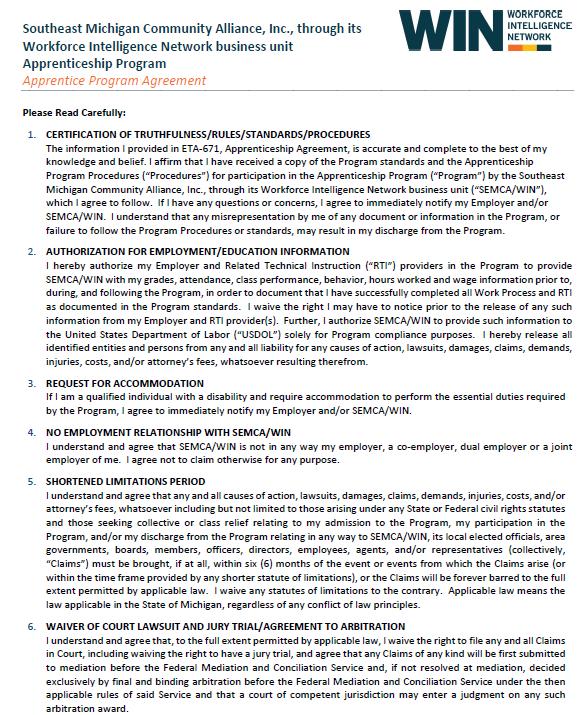
• Employer’s may grant employees in apprenticeship programs previous credit, up to 75% of the length/competency of the program.
o Internal or external work experience
o Must be outlined and itemized where credit is given
o Official documentation by Sponsor or employer, signed by supervisor
• If credit is granted, apprentice’s wages must reflect their advanced standing according to wage scale.
• Apprentices must be registered for a minimum of six months to complete a program. (about 1000 hours)

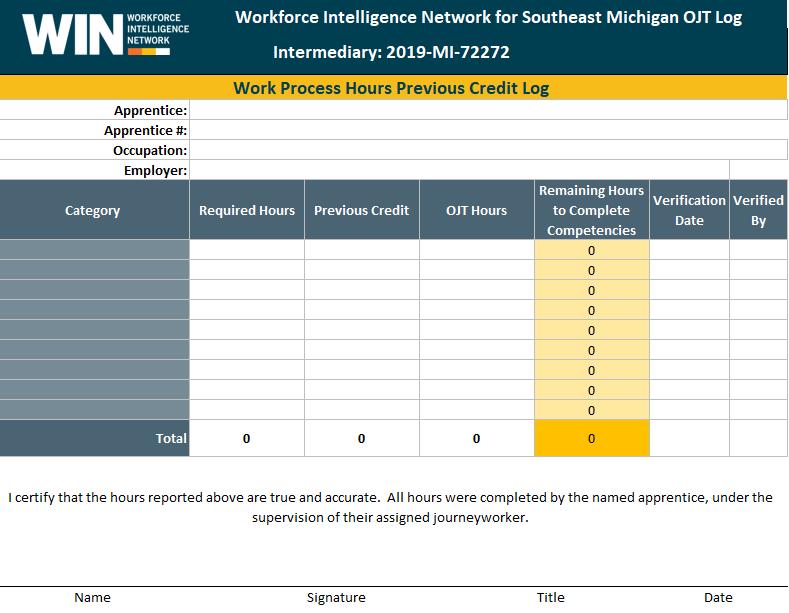
Competency Based


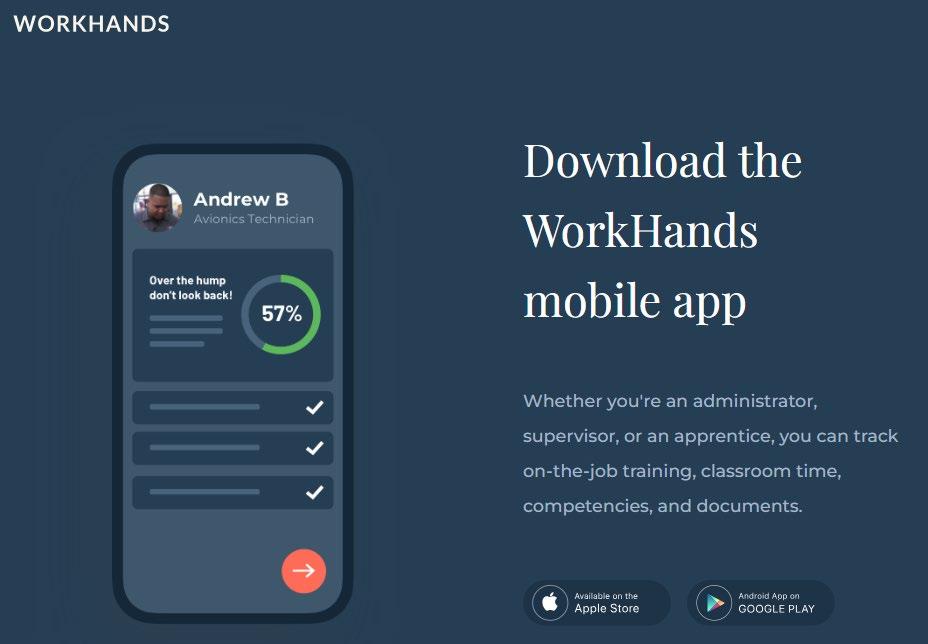
There are multiple online Apprenticeship tracking tools, find one that works for you.
Benefits:
• Automatic notifications and reminders
• Apprentice submission, supervisor approval, sponsor oversight
• Live-time tracking of OJT and RTI

• Official or unofficial transcripts, certificates of completion
o Current and previous RTI
o Employer’s discretion to accept previous RTI “transfers” from other RTI provider
• Encourage employer to discuss coursework with RTI provider
• Obtain transcripts at minimum annually, bi-annually or more frequently is recommended
o (Reminder: 144 hours minimum/year to stay on track)

Required Minimums:
• Annual Voluntary Disability Disclosure
• Equal Opportunity & Discrimination/Harassment Prevention Policy
• Mandatory Discrimination/Harassment Prevention Training for Managers and Supervisors
• Mandatory Discrimination/Harassment Prevention Training for Apprentices and Employees

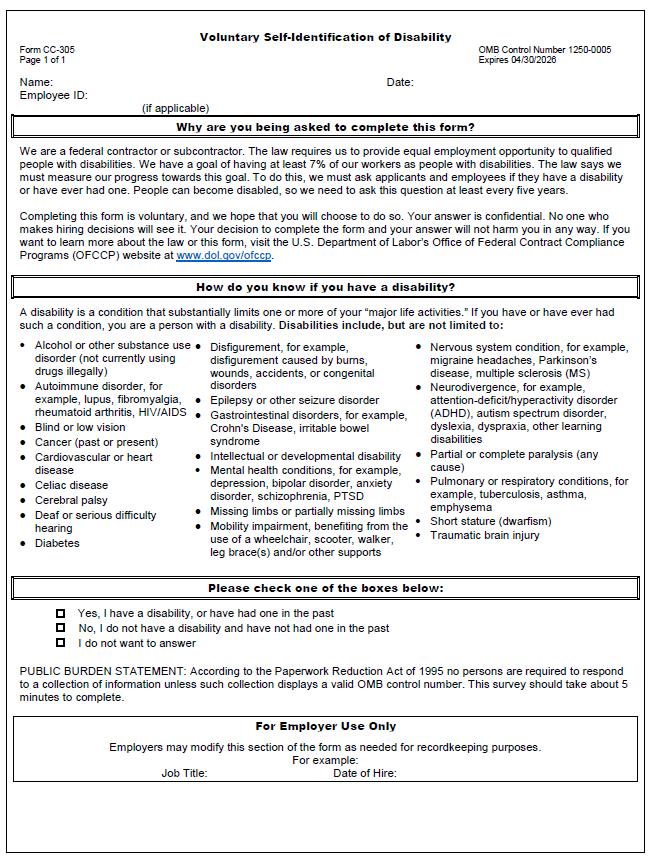
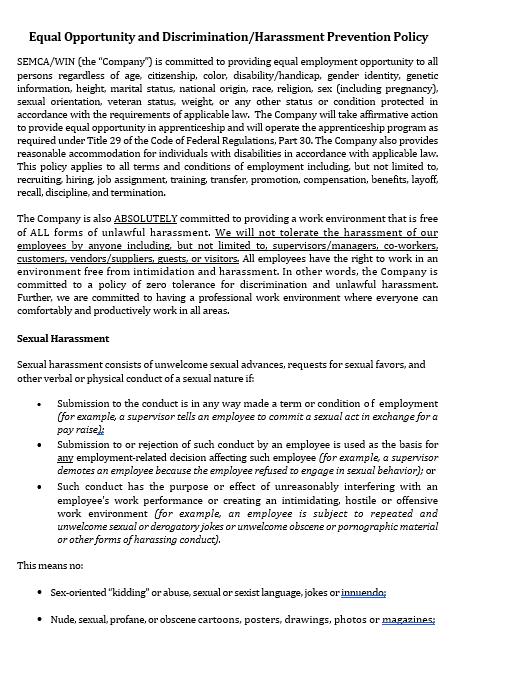

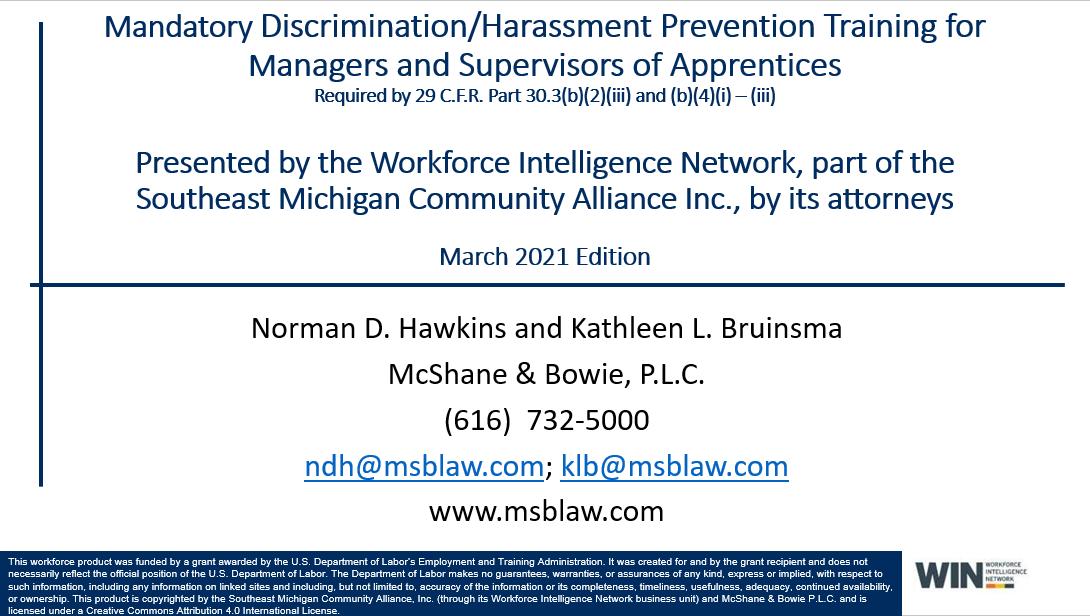
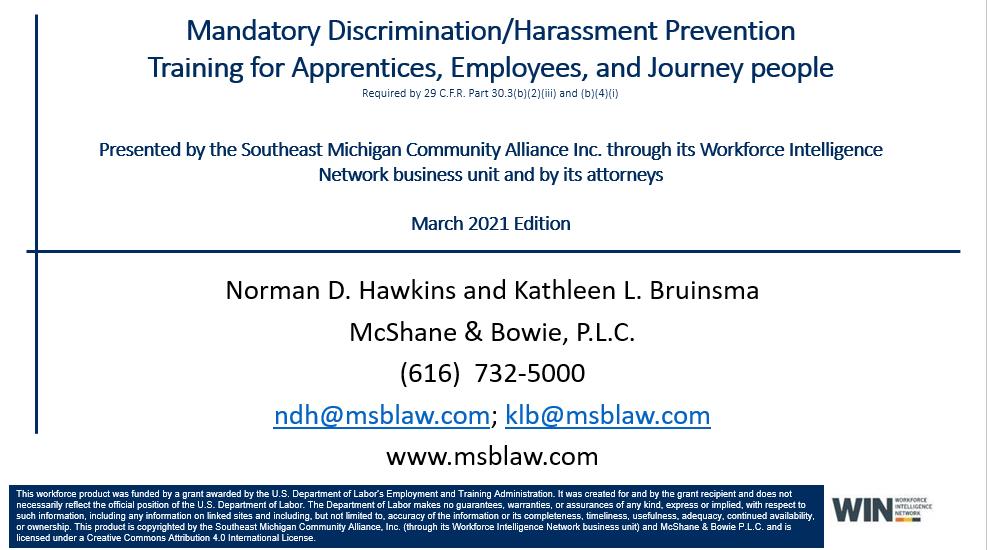
• Employers must keep files/applicant log(s)
• Identify and Establish Equitable Selection Procedures
• Outreach and recruitment activities
• Resource:
o Interview rating form available

• Review all records to assure compliance with Appendix A
• If not already provided, request:
o Wage verification
o RTI Progress
o Work Process Schedule/OJT check-in
• Check-in with employers on progress or concerns Document any meaningful changes/issues If there are program revisions needed, see “CERTIFY” section
ANNUALLY:
• Program Review; Request success stories from employers + provide program/completion data
• Apprentice Disability disclosures (annually)





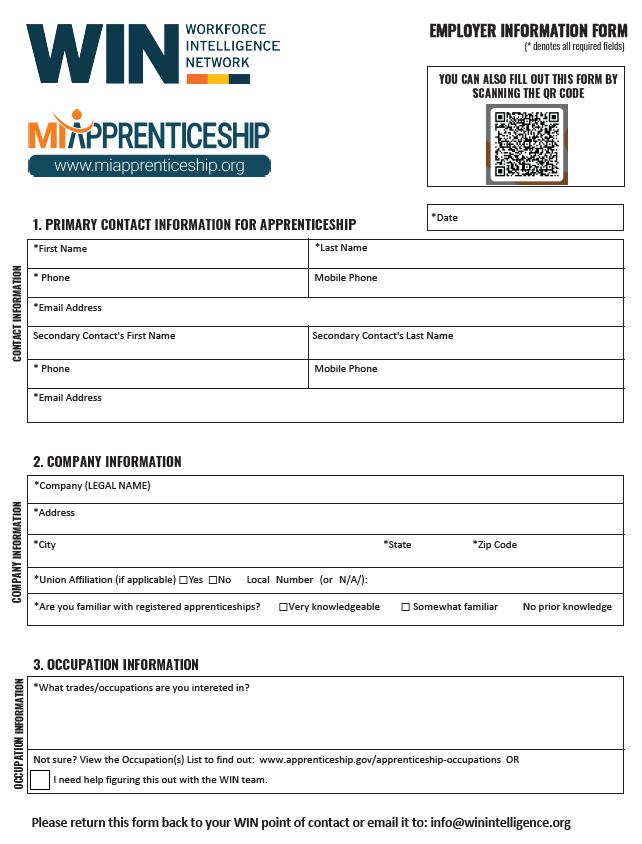

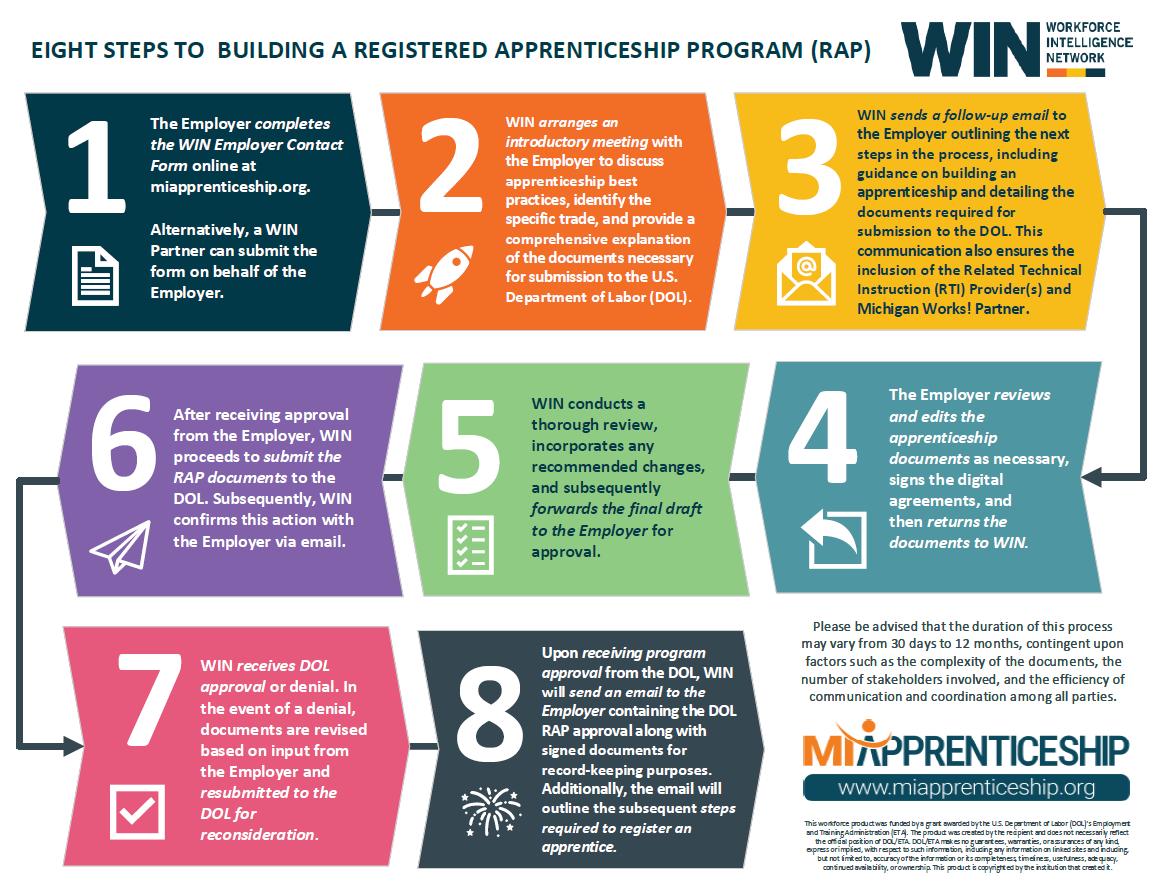

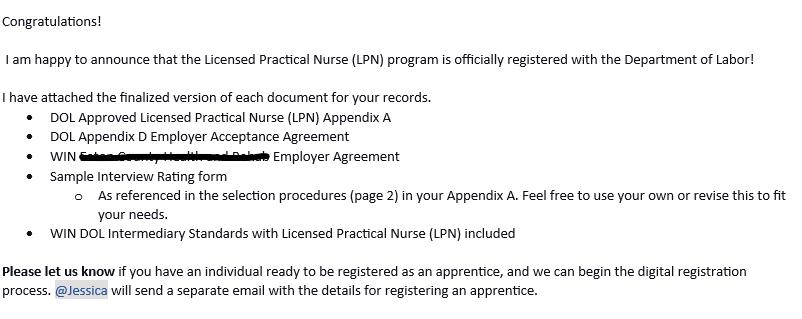



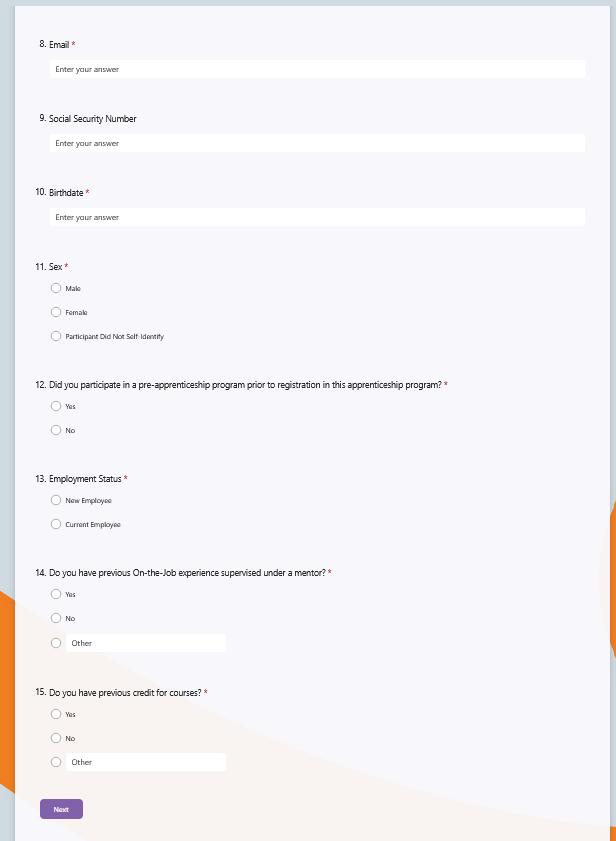


vba-tpss.vbatraining.org/assess/trkSignIn?refid=XSCO

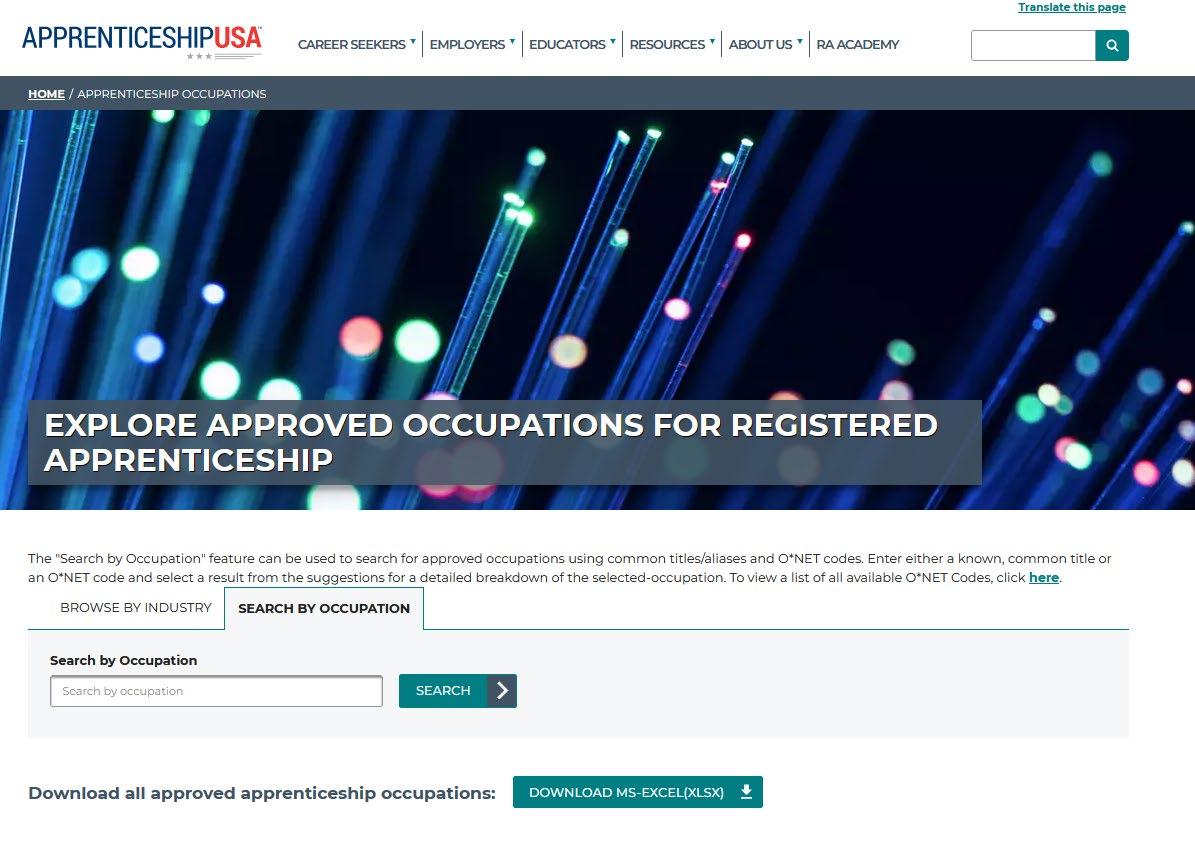
LINK:
https://www.apprenticeship. gov/apprenticeshipoccupations


